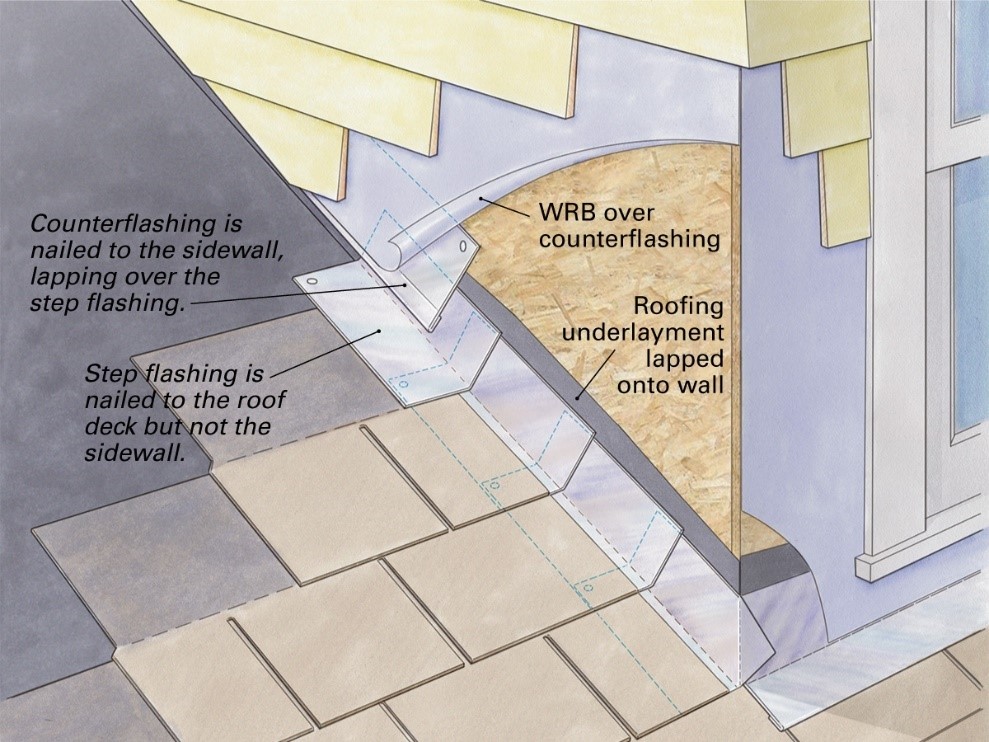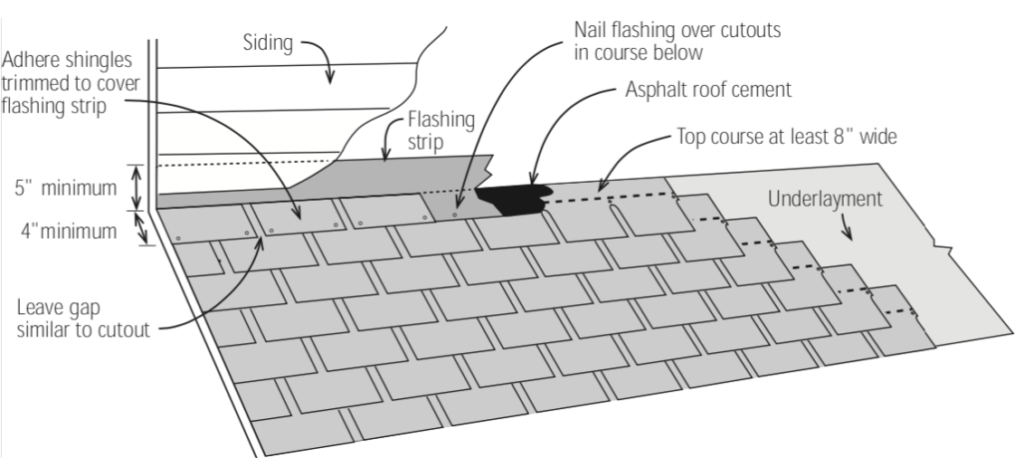Roof Flashings
Step Flashing
 This refers to areas where the roofing meets an exterior house wall (siding) usually on a slope or a horizontal area on the home. Earlier we discussed flashings around chimneys which protrude through the roof deck or are running up the side of the home along the roof. The step flashing in conjunction with the counter-flashing (used during a roof and siding project) or existing siding (which acts as the counter flashing) funnels water away from the house downwards to the eave area and gutters. Thus, preventing water from entering the home.
This refers to areas where the roofing meets an exterior house wall (siding) usually on a slope or a horizontal area on the home. Earlier we discussed flashings around chimneys which protrude through the roof deck or are running up the side of the home along the roof. The step flashing in conjunction with the counter-flashing (used during a roof and siding project) or existing siding (which acts as the counter flashing) funnels water away from the house downwards to the eave area and gutters. Thus, preventing water from entering the home.
Head Wall Flashing
 Similar to step flashing, head wall flashing channels water away from the house and down the slope of the roof towards the eave and into the gutters.
Similar to step flashing, head wall flashing channels water away from the house and down the slope of the roof towards the eave and into the gutters.
Valley Flashing
When a particular style of roofing (3-ply) or an aesthetic reason calls for an open valley, either metal or copper is used to keep the valley dry. Ice & water shield is installed 18 inches on each side of the valley as the first level of protection. The valley material (metal or copper) is then installed. The valley material will be 24 inches wide (12 inches on each side of the valley). The roofing material (asphalt, slate, metal, cedar) is installed, leaving a 6-inch gap between each side of the valleys (3 inches on each side). The valley material is normally 10 feet in length and is fastened to the decking through the underlayment. Below are a few examples of valley materials and installation styles.



We Know Roofs
Whether, you are looking at repairing an existing roof, or replacing a roof, there are plenty of questions to answer. Old Colony Roofing is here to provide credible and honest information – from a true expert.
The goal of these pages is to arm you with the pros and cons of a variety of roofing questions and answers.
Ask About Our Financing
Roofs as low as $99/month*
Roofing Repairs
The good news is, roofs can be repaired. The bad news is, there are reasons why this may not make sense. First, it is important to discuss common roofing failures and why these result in leaking. See below for a list of common roofing failures:










